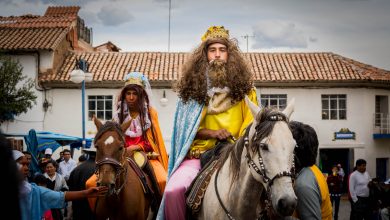Happy Andean New Year, a Cultural Quest

Happy New Year. What, you say. That is in January but increasingly throughout the Andes today is celebrated as the Andean New Year, the Kuti Willka, Mosoj Wata, or Machak Mara.
It is the solstice, of course, a time when the daylight is shortest and the sun stops briefly before once again climbing through the sky. As a result, it makes sense to think of it as a beginning of a new year. However, the history of this date as a new year and celebrating it has a different background.

According to Carlos Macusaya it began in the rich broth that was La Paz, Bolivia in the seventies and eighties. This is when many youth from rural La Paz, who spoke Aymara, found themselves studying in the Universidad Mayor de San Andrés of la Paz. They had many questions about identity and the place of indigenous people within Bolivian society. They read texts, wrote, conversed, made art, and from that very fertile environment came much that has had great power within Bolivian society and in the Peruvian South.
This is the same time that in Cusco was forged the current, dominant idea of the City as an inheritor of an ancestral culture which should be propagated and maintained in the city and department. Daniel Estrada Pérez is a key figure in this movement as the long time mayor of the city and prominent political actor.
At this time, the rainbow idea and especially the flag was established as a flag of Tawantinsuyo and of the city of Cusco. This is the period in which the city’s name was officially changed from Cuzco to Cusco and a faulty but emotionally powerful justification founded in an opposition to the Spanish and the conquest. The names of many of the city’s streets were changed to Quechua and Quechua became ever more celebrated as something officially belonging to the city, as did folk dance to represent the city’s culture.

However, there are key differences. In Cusco, the movement took form as an elite movement, which is not to dismiss at all the many popular variants of arguments, questions, and ideas, that do not crystalize in the official arguments of the municipality. You can see this in the way the Days of Cusco are carried out and presented, where almost everything centers on people presenting themselves before the judges on the steps of the Cathedral, where you find the authorities of the fiestas and the authorities of the city. Hierarchy is one of its central meanings.
The Andean New Year came, instead from a communal set of meanings and organizations which, though they spawned guerrilla movements and contributed to the movement that led to the Election of MAS and Evo Morales to lead the country, more than anything else they spawned a horizontal cultural movement that reframed Bolivia and even Peru as places where indigenous people belong and should set the cultural, social, economic and political agenda.
From this came the wiphala flag, different from the rainbow flag of Cusco, in that it is not hierarchical or owned.

Out of this movement also arose a search for symbols and rites of the ancestral that could be folded into urban existence. Much of rural life, tied as it was to local cosmologies and meanings, was not easily usable. But from questions such as why do Jews, Chinese, and many other people have their own New Year and we don’t developed a new, ancestral celebration of the Andean New Year.
The idea has taken off and now is a very strong cultural current in the Andes. It is part of a strong and demanding way of being Aymara or Quechua, also relatively new-ancestral identities, with claims to he forming of publics and nations.
As a result, Happy New Year. With the full moon and the solstice it is a great time to claim power from the celestial orbs and stand for renewed and fairer societies as well as better lives.




